Elements of Bestsellers (Patterns-01)
Feb-12-2012 Filed in: Bestseller patterns
If you’ve read Final Edit, The Final Hours of Your Final Draft, you know that I advocate an approach to self-editing that includes making certain types of decisions and revisions after considering what bestselling authors have done at similar junctures. Future books in the Science of Writing Series will extend this type of decision-making to other stages of the writing process.
When you make an edit decision based upon a proven strategy evidenced in known successful works, you use a method employed by many artists, composers, authors, choreographers, and playwrights. Igor Stravinsky once said, “Good composers borrow; great composers steal,” but he was referring to something more akin to the quotation of identifiable material, rather than the application of a proven method or set of decision-making constraints.
Science of Writing books has been able to establish such decision-making constraints as a result of more than a decade of data-mining bestsellers with proprietary software, a small subset of which is accessible at FictionFixer.com.
FictionFixer recognizes patterns on many levels of bestselling works, including levels that often go unmentioned and unthought-of. One purpose of this blog is to bridge the gap between using such information for final edit decisions, and applying similarly obtained principles to your writing at a far earlier stage than the final edit. With this in mind, the following is the first of several previews from a forthcoming book in the Science of Writing series (working title: The Form and Analysis of Writing).
Question: Do bestsellers exhibit structural patterns in the flow of dialog paragraphs versus non-dialog paragraphs?
This is one of the simplest patterns revealed by FictionFixer. The software encodes every paragraph of books using a proprietary functional coding that enables the detection of structural organization on many levels. At one stage of analysis, the software reduces paragraphs to a single letter: “D” or “N” for dialog or non-dialog. For books written in the first person “F” is added to identify between material written in the first person.
The dialog and non-dialog designations are further broken down into “d,” “D,” “n,” and “N,” the lowercase versions indicating paragraphs that consist of a single sentence.
Notice how the following patterns gradually phase in and out of the two main types of paragraphs draw from blockbuster bestsellers.
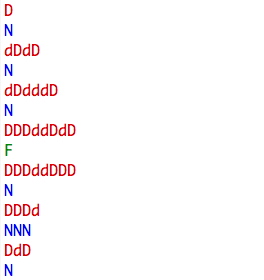
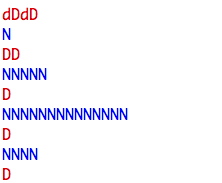
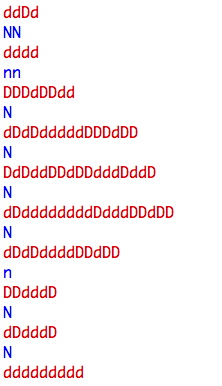
Both first-person dialog and non-dialog paragraphs gradually decrease as third-person dialog increases:
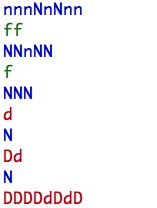
In the following example, we are distanced from the dialog by increasing numbers of non-dialog paragraphs, until suddenly, a one-sentence paragraph in first-person (green “f”) triggers a very striking plot-point.
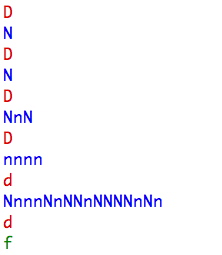
This “dissipation” patterns often appears after the climax.
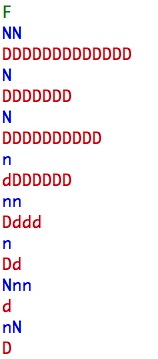
When you make an edit decision based upon a proven strategy evidenced in known successful works, you use a method employed by many artists, composers, authors, choreographers, and playwrights. Igor Stravinsky once said, “Good composers borrow; great composers steal,” but he was referring to something more akin to the quotation of identifiable material, rather than the application of a proven method or set of decision-making constraints.
Science of Writing books has been able to establish such decision-making constraints as a result of more than a decade of data-mining bestsellers with proprietary software, a small subset of which is accessible at FictionFixer.com.
FictionFixer recognizes patterns on many levels of bestselling works, including levels that often go unmentioned and unthought-of. One purpose of this blog is to bridge the gap between using such information for final edit decisions, and applying similarly obtained principles to your writing at a far earlier stage than the final edit. With this in mind, the following is the first of several previews from a forthcoming book in the Science of Writing series (working title: The Form and Analysis of Writing).
Question: Do bestsellers exhibit structural patterns in the flow of dialog paragraphs versus non-dialog paragraphs?
This is one of the simplest patterns revealed by FictionFixer. The software encodes every paragraph of books using a proprietary functional coding that enables the detection of structural organization on many levels. At one stage of analysis, the software reduces paragraphs to a single letter: “D” or “N” for dialog or non-dialog. For books written in the first person “F” is added to identify between material written in the first person.
The dialog and non-dialog designations are further broken down into “d,” “D,” “n,” and “N,” the lowercase versions indicating paragraphs that consist of a single sentence.
Notice how the following patterns gradually phase in and out of the two main types of paragraphs draw from blockbuster bestsellers.



Both first-person dialog and non-dialog paragraphs gradually decrease as third-person dialog increases:

In the following example, we are distanced from the dialog by increasing numbers of non-dialog paragraphs, until suddenly, a one-sentence paragraph in first-person (green “f”) triggers a very striking plot-point.

This “dissipation” patterns often appears after the climax.

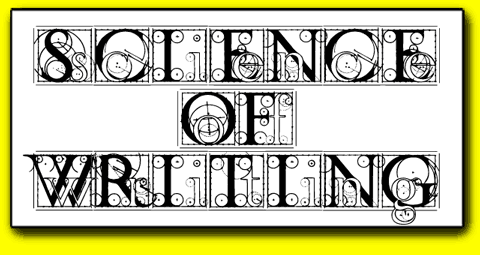

1s.jpg)
2s.jpg)